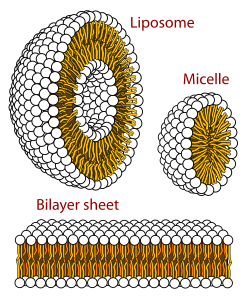It's finally here! Sorry this one took so long guys, but I had to do a lot of researching on some subjects on my own to get a better understanding of them before writing.
THE BASICS - CHOLESTEROL
Cholesterol is a waxy lipid that acts as the starting material for the production of steroid hormones, bile acids and salts, and vitamin D synthesis. It also is an important molecule used for the repair and maintenance of cell membranes, where it helps maintain membrane fluidity.
Hormones are very important chemicals in our bodies, altogether they form a system of intercellular communication. Hormones are very powerful, and required only in small amounts to induce their effects on the targeted area. Hormones regulate everything from digestion to electrolyte levels, to brain function, to tissue repair or breakdown, and everything in between; hormones are how the complex system of organs and tissues that is our body communicates and functions properly.
(Above - the pathways for synthesis of some important steroid hormones)
Glucocorticoids are hormones, secreted in the adrenal cortex, and have two main areas of influence, the immune system and metabolism, but they also play a role in arousal/cognition, and fetal development. Their effects on the immune system include an up-regulation of anti-inflammatory proteins, and a down-regulation of pro-inflammatory proteins. The net effect is a reduction in inflammation. Glucocorticoids have a catabolic effect on the body’s metabolism, which means that rather than storing energy, tissues are broken down to be used for energy. The specific mechanisms glucocorticoids stimulate are: increased gluconeogenesis, mobilization of amino acids from extrahepatic(other than liver) tissues, inhibition of glucose uptake by muscle and adipose tissue, and stimulation of fat breakdown(lipolysis). The most important glucocorticoid is cortisol.
Mineralocorticoids regulate electrolyte and water balance in the body primarily by acting on the kidneys. The primary mineralocorticoid is aldosterone, though progesterone and deoxycorticosterone also exhibit mineralocorticoid effects.
Androgens are generally known as the male sex hormones, in that they stimulate the development of male characteristics. They still do appear in females, but to a much lesser degree. The particularly well known androgens include testosterone and dihydrotestosterone(DHT).
Estrogens are steroid hormones that stimulate the development of feminine characteristics, as well as play an important role in regulating the estrous cycle. They are created by enzymes that convert androgens to estrogens. The primary estrogens in women are estradiol(most present in non-pregnant females), estriol(produced during pregnancy), and estrone(produced during menopause).
Progestagens, along with estrogens, act to regulate the menstrual cycle and estrous cycles.
Bile salts and acids are produced by the liver and stored in the gall bladder. The term bile salt refers to a molecule that is composed of a bile acid and either glycine or taurine. Their main function is to facilitate the formation of micelles, which helps the body process dietary fat. Because fat and water do not mix, micelles are necessary for lipids and fat-soluble vitamins to dissolve in aqueous(water based) solutions.
(Above - cross-sectional view of structures that can be formed by phospholipids in an aqueous solution)
The repair and maintenance of cell membranes requires cholesterol. Cholesterol typically makes up about 20% of the mass of the cellular membranes, with smaller amounts included in the organelles inside of cells. Cholesterol lends some structure to cell membranes, allowing them a certain degree of rigidity. Without cholesterol, the membrane would be much too fluid, and would be much too permeable to certain molecules. In addition to providing structure to cell membranes, cholesterol also keeps them fluid, by helping to separate phospholipids and keeping fatty acid chains from merging and crystallizing.
Lipid raft organisation, region (1) is standard lipid bilayer, while region (2) is a lipid raft.




No comments:
Post a Comment